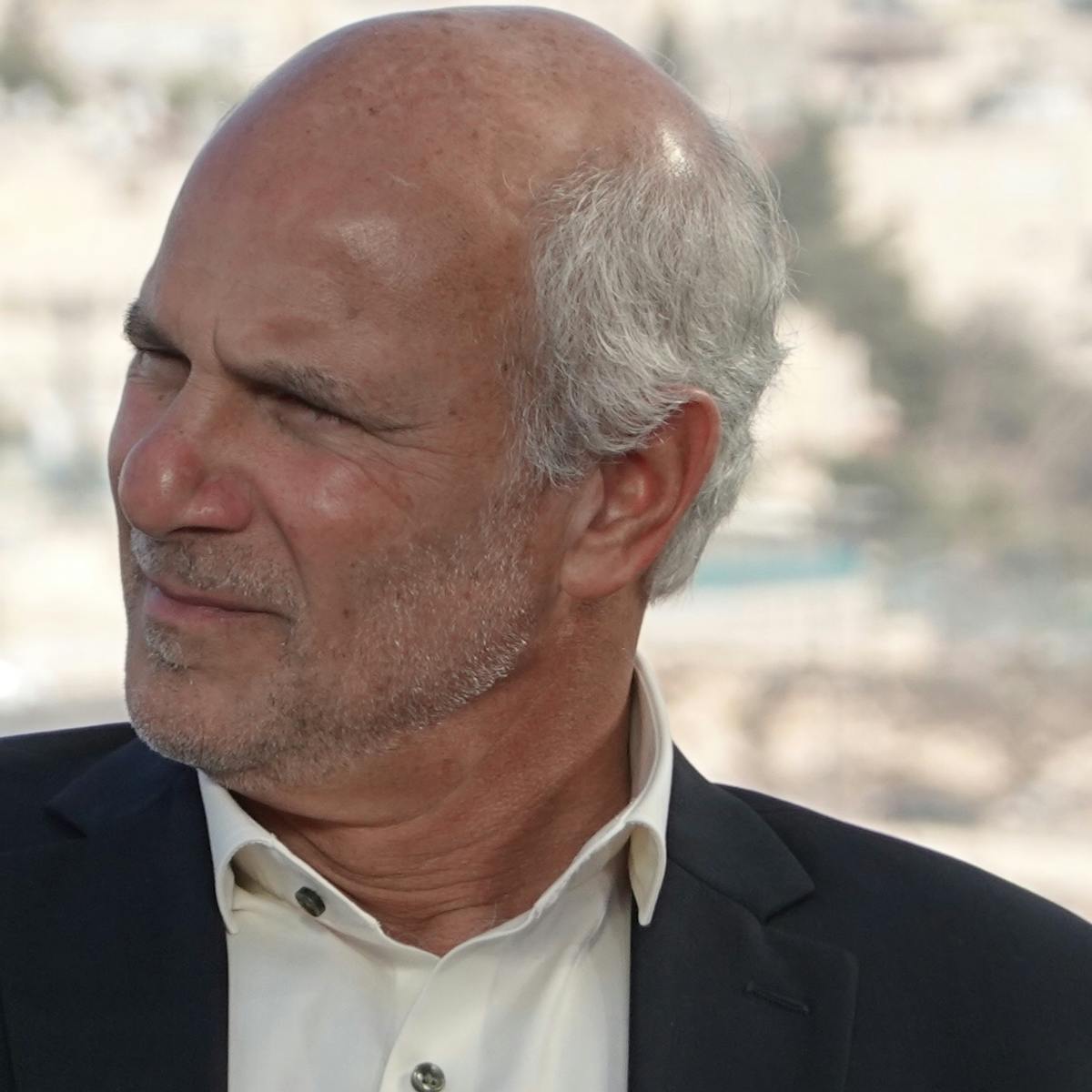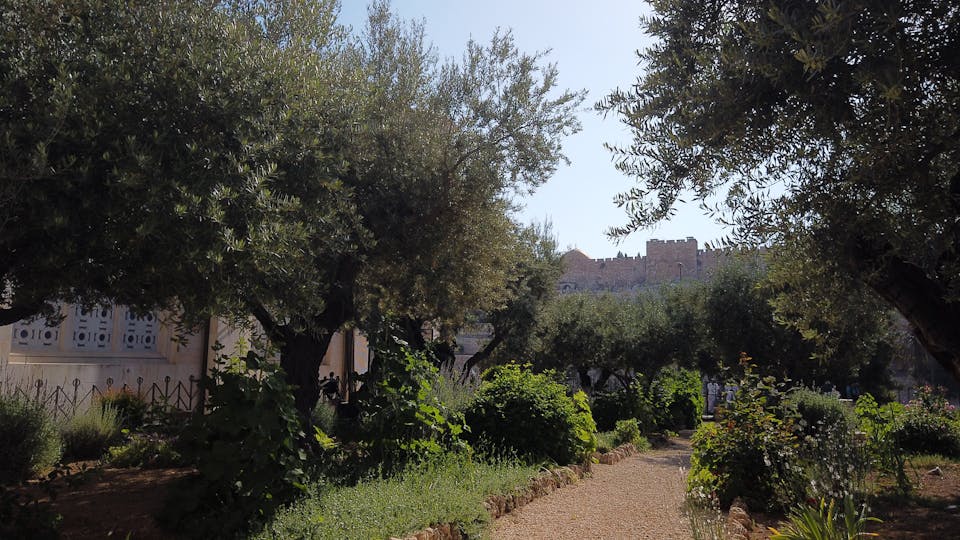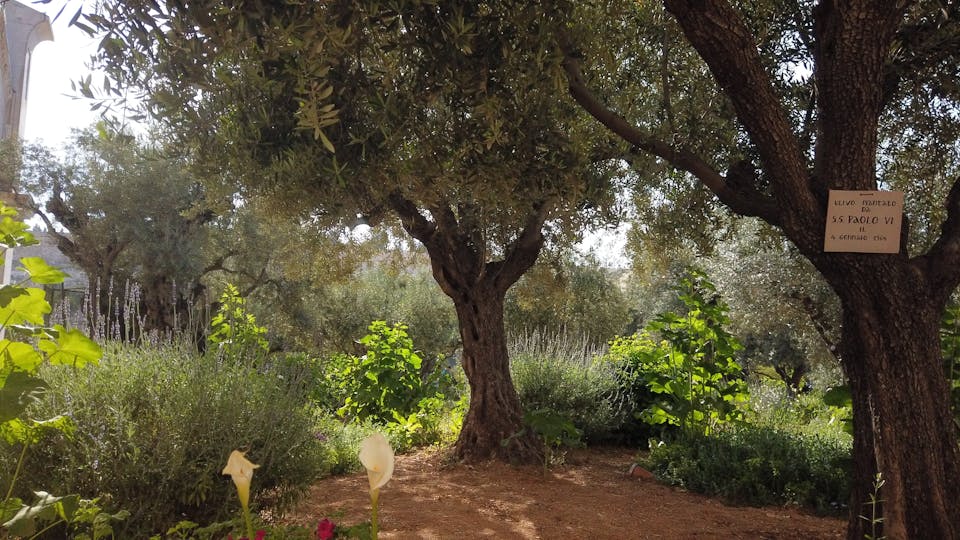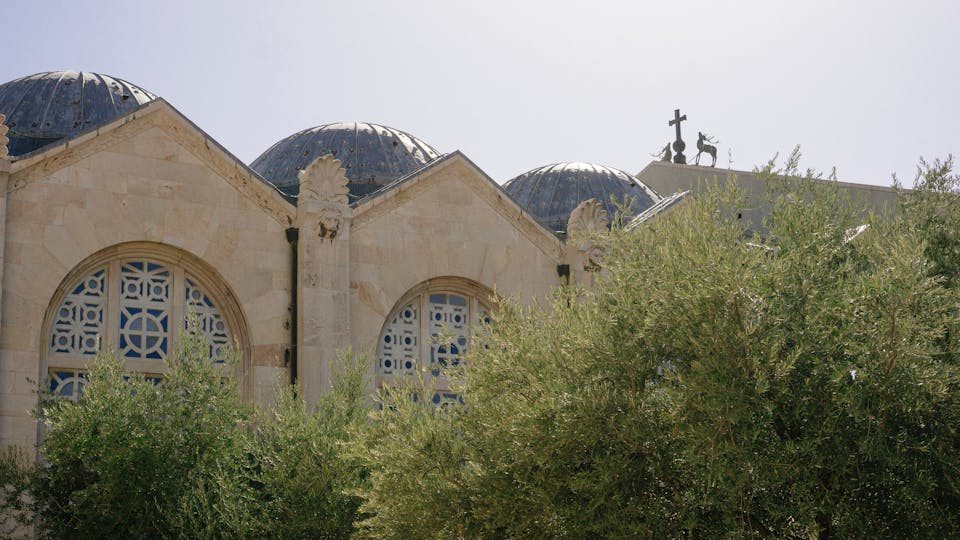The Complete Guide to The Garden of Gethsemane

Positioned prominently upon the western slopes of the Mount of Olives facing Jerusalem, travelers, and pilgrims to the Holy Land will find the Garden of Gethsemane by the beautiful grounds of the Church of all Nations.
Attracting millions of visitors over many centuries since at least the 4th Century AD, this tranquil and historic garden features magnificent and ancient olive trees next to a Franciscan prayer chapel.
These trees are standing silent and immovable as living witnesses to the timeless story of Jesus and the miraculous events of the night of His prayer vigil, betrayal, and arrest leading up to His crucifixion.
Join us as we explore the historical, biblical, archeological, and theological significance of the Garden of Gethsemane that has drawn so many pilgrims over so many centuries to this quiet spot. Let us discover what it is about this secluded and ancient garden that gave it the sacred reverence and awe it possesses and projects from antiquity until today.

What is The Garden of Gethsemane Famous For?
The biblical text of the New Testament Gospel accounts tells us that the Garden of Gethsemane was a favorite rural location that Jesus and His disciples visited more than once, and probably many times.
Not only was it a suitable place for private prayer and fellowship for this tight band of disciples looking for solace away from the hustle and bustle and curious ears of the big city, but it also was conveniently located by the path leading from Jerusalem and the Temple to the villages of Bethany and Bethpage which Jesus often visited.
It was at the Garden of Gethsemane that Jesus spent His final hours and prayed His final prayers just before He was betrayed and arrested.
Within hours of his dramatic arrest, He faced a compromised and politicized Sanhedrin court was condemned to death for the sin of blasphemy, and was crucified outside of the walls of Jerusalem.
It is the divine, unfathomable agony, and the eternal consequences of these events, that gave the Garden of Gethsemane its significance and renown worldwide.
Historical Background of The Garden of Gethsemane
The actual historic setting was that of a commercial enterprise of olive oil production, which, according to the manner of those times, included a grove of olive trees (which the entire region is famous for) with an authentic olive press where the harvested olives were processed, crushed, and the precious oil extracted under great pressure.
The olive oil carried tremendous significance during biblical times as it was the main oil product used for sacred religious services (anointing oil), lighting (oil lamps), cooking, healing, and cleaning.
In the original text, the name “Gethsemane'' is made up of two Hebrew/Aramaic words, “Gat Shemanei,” which literally means “Olive Press.” In fact, genuine olive oil is still pressed each year from the fruit of those ancient and gnarled olive trees growing in the Garden of Gethsemane today.
According to the Gospels, Jesus led His disciples to the Garden of Gethsemane following the Last Supper in Jerusalem just before His arrest, trial, and execution.
It was during that supper that the disciples and their Rabbi shared the biblical Passover meal in observation of Israel’s first annual Feast celebration during the spring of the year. This was to commemorate the miraculous exodus out of Egypt when God delivered His people from slavery and oppression in preparation to launch their national life and mission as His chosen people.
It is the mystery of “what was Israel chosen for,” that mystifies the minds of many since that time.
It was during that Passover meal in the Upper Room nearly 2,000 years ago that Jesus revealed great truths to His disciples in what became His final teaching before His death and resurrection.
That night, He spoke very clearly about His divine identity, His mission, the special relationship between Himself and His disciples, the promised gift of the Holy Spirit, the coming persecution, and the New Covenant that He Himself ratified during the Passover meal in His own flesh and blood, symbolized in the unleavened bread and cup of wine they shared.
What Happened in The Garden of Gethsemane?
After that historic Passover meal that is recorded in all four Gospels, Jesus led His band of disciples out of the City of Jerusalem and across the Kidron Valley to the Garden of Gethsemane.
Here He will spend His final prayer time with the men closest to Him before His arrest, trial and crucifixion; a prayer time that is recognized by many as the most significant and dramatic prayer vigil in the Bible, the prayer of the Son of God to His Great Heavenly Father.
It was in this very garden, somewhere among the ancient olive trees, that Jesus agonized in prayer to His Heavenly Father as He prepared His soul for the Cross and for the unfathomable suffering of separating from His Father to become not only sin but also the atoning sacrifice for the sin of all humanity.
Within hours He will be betrayed and abandoned by His own disciples, arrested by the Jewish Temple Guard, judged as a common criminal before a corrupt “kangaroo court”, condemned to death by an idol-worshipping Governor, and nailed to a Roman cross.
This fast-moving chain of events that lasted just a few hours and that has changed the course of our world forever, started right here at the Garden of Gethsemane.
Blood, Sweat, and Tears in Gethsemane
According to Luke’s account of the events, Jesus’ agony and deep sorrow during His prayer vigil in the Garden of Gethsemane were so intense and exhausting that His sweat drops were mingled with blood.
Luke, who was a physician, was describing an actual medical condition called Hematohidrosis in which a person literally sweats drops of blood.
This rare condition can stem from various causes, including high stress and excessive exertion, causing the person’s blood to press through the membrane of the blood vessels and penetrate through the skin.
No one can ever imagine the pressure, stress, and agony that Jesus experienced during His prayer time on that night so long ago at Gethsemane.

Hebraic Meaning of the Oil Press at Gethsemane
The fact that these events took place in “Gat Shemanei,” or the “Oil Press” garden, is very significant to the visitor who understands the Hebraic and biblical meaning associated with the production of olive oil.
The entire process is based on applying increasing pressure upon the harvested olives by adding more and more weights to the large wooden beam that carries the pressure point to the bagged fruits. Each additional weight extracted more oil from the crushed olives until they were completely exhausted and drained.
According to tradition, there were four successive “harvests” of oil from the crushed olives as the pressure gradually increased. The first pressure produced the purest, virgin oil, which was used for anointing in the Temple courts and sacred services.
The second stage of additional pressure produced oil for cooking; the third for lighting, and the fourth for cleaning.
Keeping these historic facts in mind, the visitor to the Garden of Gethsemane can better understand, and perhaps appreciate, the agony of Jesus as He submitted to His Father’s will.
It was in this garden that His life’s calling and mission came crashing down upon Him, just as the successive weights come down upon the olives to produce the precious oil.
As John the Baptist introduced Him to Israel just a few years earlier, He was born to be “The Lamb of God that takes away the sin of the world,” (John 1:29), and the events of the Garden of Gethsemane marked the point of no return.
What did Jesus Say in The Garden of Gethsemane?
For these reasons and more, the Garden of Gethsemane is also known by Christian pilgrims and followers as “The Agony in the Garden” and “The Agony of Christ.” Both names point to the unimaginable sufferings Jesus endured, and yet, the story didn’t end there.
The Gospel account tells us that “... they came to a place which was named Gethsemane; and He said to His disciples, ‘Sit here while I pray.’ And He took Peter, James, and John with Him, and He began to be troubled and deeply distressed. Then He said to them, ‘My soul is exceedingly sorrowful, even to death. Stay here and watch.’ He went a little farther, and fell on the ground, and prayed that if it were possible, the hour might pass from Him. And He said, ‘Abba, Father, all things are possible for You. Take this cup away from Me; nevertheless, not what I will, but what You will.’” (Mark 14).
According to Christian doctrine, the greatest display of the Son’s surrender and complete obedience to His Heavenly Father occurred in the Garden of Gethsemane.
Knowing the horrific price He will soon have to pay if He were to become both the sin and the atonement for the sin of the whole world, Jesus was honest and genuine when He prayed to His Heavenly Father, asking if there was any other way to save mankind.
But, knowing that there wasn’t any other way to satisfy divine justice while reconciling fallen humans to God, Jesus surrendered His will to that of His Father’s and agreed to be the “Sacrifice Lamb,” making this eternal confession, “... nevertheless, not as I will, but as You will.”
This great confession not only sealed Jesus’ fate, sending Him to the cross and to the grave but, according to Christian doctrine, also led Him through death and hell, victorious, to the resurrection and to the ascension to His Father’s side in heaven.
In that, He not only fulfilled His eternal mission but also left HIs followers an example to follow and a lifestyle to imitate. Visiting the Garden of Gethsemane today, this is still the pilgrims’ prayer, “... Father, not my will, but yours be done.”
Does the Original Garden of Gethsemane still exist?
The present-day garden and surroundings date back to the 4th Century AD when the area first became a pilgrimage site. And though some alternative spots were suggested, the majority of scholars agree about the credibility of this garden.
Today, visitors will find, behind an iron fence covered with Byzantine motifs, a beautiful flower garden surrounding a central protected area that features the gnarled trunks of eight very old olive trees.
How Old are the Trees at Gethsemane?
A question many are asking is: “were the trees we see today in the garden the actual silent witnesses to the passion and agony of Jesus on the night of His betrayal and arrest?”
Experts and researchers tell us that the Gethsemane trees we see today were not standing in that garden at the time of Christ.
In fact, the First Century historian Josephus Flavius documented that all the trees around Jerusalem were cut down and destroyed by the Roman military during their great siege just before the city was captured and destroyed in 70 AD.
The three oldest trees of the eight which are standing in the center of the garden today were scientifically studied and proven to date back to the 12th century AD.
All eight trees are believed to be cuttings from a single parent older tree. Could this ancient “parent” have been the tree upon which Jesus leaned during His prayer of agony? Was that the olive tree by which drops of holy sweat and blood fell so long ago?...
The fact is that the State of Israel has many ancient olive trees, with some believed to be over 3,000 years old! We also know that when an olive tree is cut down, new shoots come back from the original roots, creating a new tree.
Each year, a fresh harvest of olives is gathered from these ancient Gethsemane olive trees, their oil is pressed and used for the sanctuary lamps in the nearby chapel, and the pits make beautiful rosary beads for the pilgrims.

Special Pilgrim Sites by The Garden of Gethsemane
1. The Grotto of Gethsemane
About 100 meters north from the garden the visitor will find the Grotto of Gethsemane, the historical traditional spot where Jesus and his disciples are believed to have often stayed at night during their visits. Scholars believe that it was in this natural grotto that the disciples slept while Jesus prayed His famous prayer.
This grotto, about 190 square meters in size, has been mostly unchanged since the time of Jesus. It is also believed to be the spot where Jesus was betrayed and arrested, and possibly the location of His secret meeting with Nicodemus as recorded in the Gospel of john.
Wall decorations in the grotto describe the prayer of Jesus and the betrayal kiss of Judas, while the bronze figures beneath the altar portray the sleeping disciples.
It was in the 4th Century AD that the grotto first became a formal chapel, and nearly 40 graves, mainly from the 5th to 8th Centuries AD, have been discovered in the area.
The ancient wall inscriptions have been interpreted to (probably) say, “Here ... The King sweated blood;” “Christ the Saviour frequented this place with his apostles;” and “My Father, if it is your wish, let this chalice pass from me.”
2. The Church of All Nations
Right next to the Garden of Gethsemane the visitors will find the impressive Church of All Nations (also called “The Basilica of the Agony”). The Church is actually constructed around a slab of rock where Jesus is believed to have been praying on that holy night so long ago.
Designed by the famous architect Antonio Berluzzi and built in 1924 with funds from various Christian communities from all over the world, the Church bears the name “Church of all nations” in honor of the generosity and commitment of so many.
Prominent and easily recognized by its stunning gold and colorful tympanum mosaic decorations above its main entrance, this beautiful art depicts Jesus and His followers. A much older Byzantine church building that dates back to the 4th Century AD has been incorporated into the modern-day structure, and once inside the impressive indoor space, visitors can see a portion of the original Byzantine mosaic floor and the famous rock where Jesus is believed to have prayed.
3. The Tomb of Mary
Near the grotto, the visitor will find the traditional site of the Tomb of Mary, where the Mother of Jesus is believed to have been buried after she “fell asleep” in death. All these sites are together referred to by many today as “Gethsemane,” and they are maintained and operated by the gracious servants of the Franciscan Church.

Famous Scriptures of The Garden of Gethsemane
- Mark chapter 14:
"And they went to a place which was called Gethsemane; and He said to His disciples, 'Sit here, while I pray.' And he took with him Peter and James and John, and began to be greatly distressed and troubled. And He said to them, 'My soul is very sorrowful, even to death; remain here, and watch.'
And going a little farther, He fell on the ground and prayed that, if it were possible, the hour might pass from him. And he said, 'Abba, Father, all things are possible to thee; remove this cup from me; yet not what I will, but what thou wilt.' And He came and found them sleeping, and He said to Peter, 'Simon, are you asleep? Could you not watch one hour? Watch and pray that you may not enter into temptation; the spirit indeed is willing, but the flesh is weak.'
And again he went away and prayed, saying the same words. And again He came and found them sleeping, for their eyes were very heavy; and they did not know what to answer Him. And He came the third time, and said to them, 'Are you still sleeping and taking your rest? It is enough; the hour has come; the Son of man is betrayed into the hands of sinners. Rise, let us be going; see, my betrayer is at hand.'"
- Luke Chapter 22
“And He was withdrawn from them about a stone’s throw, and He knelt down and prayed, saying, ‘Father, if it is Your will, take this cup away from Me; nevertheless not My will, but Yours, be done.’ Then an angel appeared to Him from heaven, strengthening Him. And being in agony, He prayed more earnestly. Then His sweat became like great drops of blood falling down to the ground…”
- John Chapter 18
“When Jesus had spoken these words, He went out with His disciples over the Brook Kidron, where there was a garden, which He and His disciples entered. And Judas, who betrayed Him, also knew the place; for Jesus often met there with His disciples. Then Judas, having received a detachment of troops, and officers from the chief priests and Pharisees, came there with lanterns, torches, and weapons.
Jesus therefore, knowing all things that would come upon Him, went forward and said to them, ‘Whom are you seeking?’ They answered Him, ‘Jesus of Nazareth.’ Jesus said to them, ‘I am He.’ And Judas, who betrayed Him, also stood with them. Now when He said to them, ‘I am He,’ they drew back and fell to the ground.
Then He asked them again, “Whom are you seeking?” And they said, ‘Jesus of Nazareth.’ Jesus answered, ‘I have told you that I am He. Therefore, if you seek Me, let these go their way,’ that the saying might be fulfilled which He spoke, ‘Of those whom You gave Me I have lost none.’
Then Simon Peter, having a sword, drew it and struck the high priest’s servant, and cut off his right ear. The servant’s name was Malchus. So Jesus said to Peter, ‘Put your sword into the sheath. Shall I not drink the cup which My Father has given Me?’”
These, as well as other Bible verses, tell the incredible story of Gethsemane’s events. Thankfully, Christian scholars and pilgrims all through the Christian era preserved, protected and developed the area so that today’s visitors can also experience these great events through the veil of many centuries.
Today, the modern State of Israel controls the general area and provides safe and accessible conditions to host millions of pilgrims and followers of Christ as they come to the Garden of Gethsemane from all over the world. They come to worship God, thank Him for His great love and saving grace, and recommit their hearts to the Savior of all who come to Him by faith.
Opening hours at the Gethsemane site change throughout the year, and our operators will be glad to assist you to plan your visit as part of your pilgrimage to the Holy Land. Exploring and affirming the foundations of the Christian / Messianic Faith, a visit to the Garden of Gethsemane is a must!
We are looking forward to hearing from you soon and help plan your pilgrimage. Gethsemane is waiting.